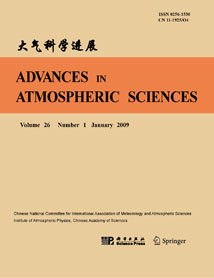Statistical Downscaling for Multi-Model Ensemble Prediction of Summer Monsoon Rainfall in the Asia-Pacific Region Using Geopotential Height Field
- Manuscript received: 2008-09-10
- Manuscript revised: 2008-09-10
Abstract: The 21-yr ensemble predictions of model precipitation and circulation in the East Asian and western North Pacific (Asia-Pacific) summer monsoon region (0o--50oN, 100o--150oE) were evaluated in nine different AGCM, used in the Asia-Pacific Economic Cooperation Climate Center (APCC) multi-model ensemble seasonal prediction system. The analysis indicates that the precipitation anomaly patterns of model ensemble predictions are substantially different from the observed counterparts in this region, but the summer monsoon circulations are reasonably predicted. For example, all models can well produce the interannual variability of the western North Pacific monsoon index (WNPMI) defined by 850 hPa winds, but they failed to predict the relationship between WNPMI and precipitation anomalies. The interannual variability of the 500 hPa geopotential height (GPH) can be well predicted by the models in contrast to precipitation anomalies. On the basis of such model performances and the relationship between the interannual variations of 500 hPa GPH and precipitation anomalies, we developed a statistical scheme used to downscale the summer monsoon precipitation anomaly on the basis of EOF and singular value decomposition (SVD). In this scheme, the three leading EOF modes of 500 hPa GPH anomaly fields predicted by the models are firstly corrected by the linear regression between the principal components in each model and observation, respectively. Then, the corrected model GPH is chosen as the predictor to downscale the precipitation anomaly field, which is assembled by the forecasted expansion coefficients of model 500 hPa GPH and the three leading SVD modes of observed precipitation anomaly corresponding to the prediction of model 500 hPa GPH during a 19-year training period. The cross-validated forecasts suggest that this downscaling scheme may have a potential to improve the forecast skill of the precipitation anomaly in the South China Sea, western North Pacific and the East Asia Pacific regions, where the anomaly correlation coefficient (ACC) has been improved by 0.14, corresponding to the reduced RMSE of 10.4% in the conventional multi-model ensemble (MME) forecast.
-
Keywords:
- summer monsoon precipitation,
- multi-model ensemble prediction,
- statistical downscaling forecast















 AAS Website
AAS Website 
 AAS WeChat
AAS WeChat 
 DownLoad:
DownLoad: